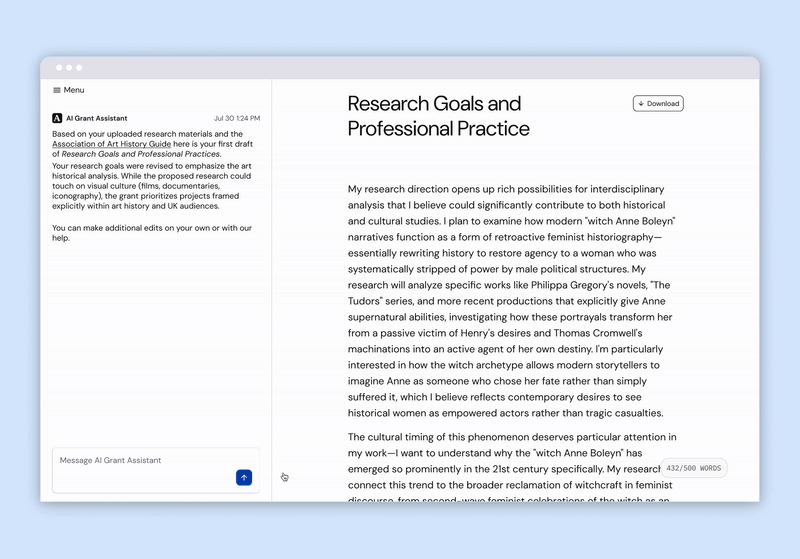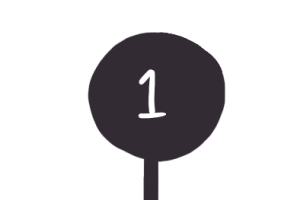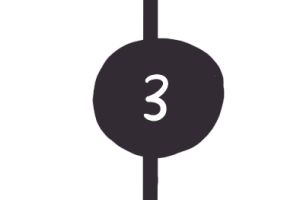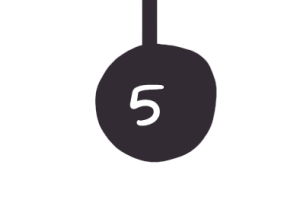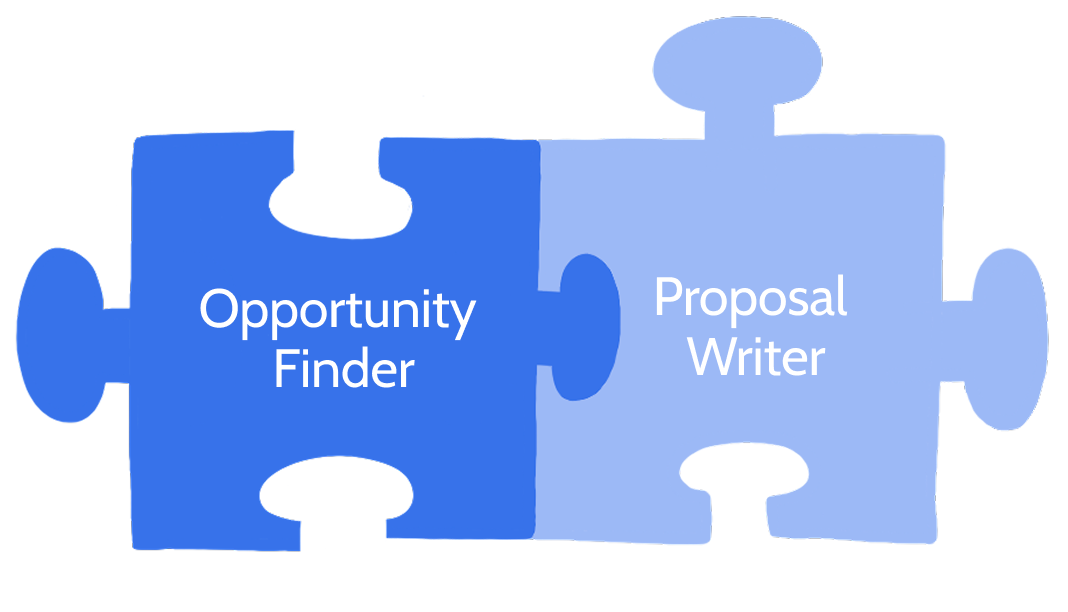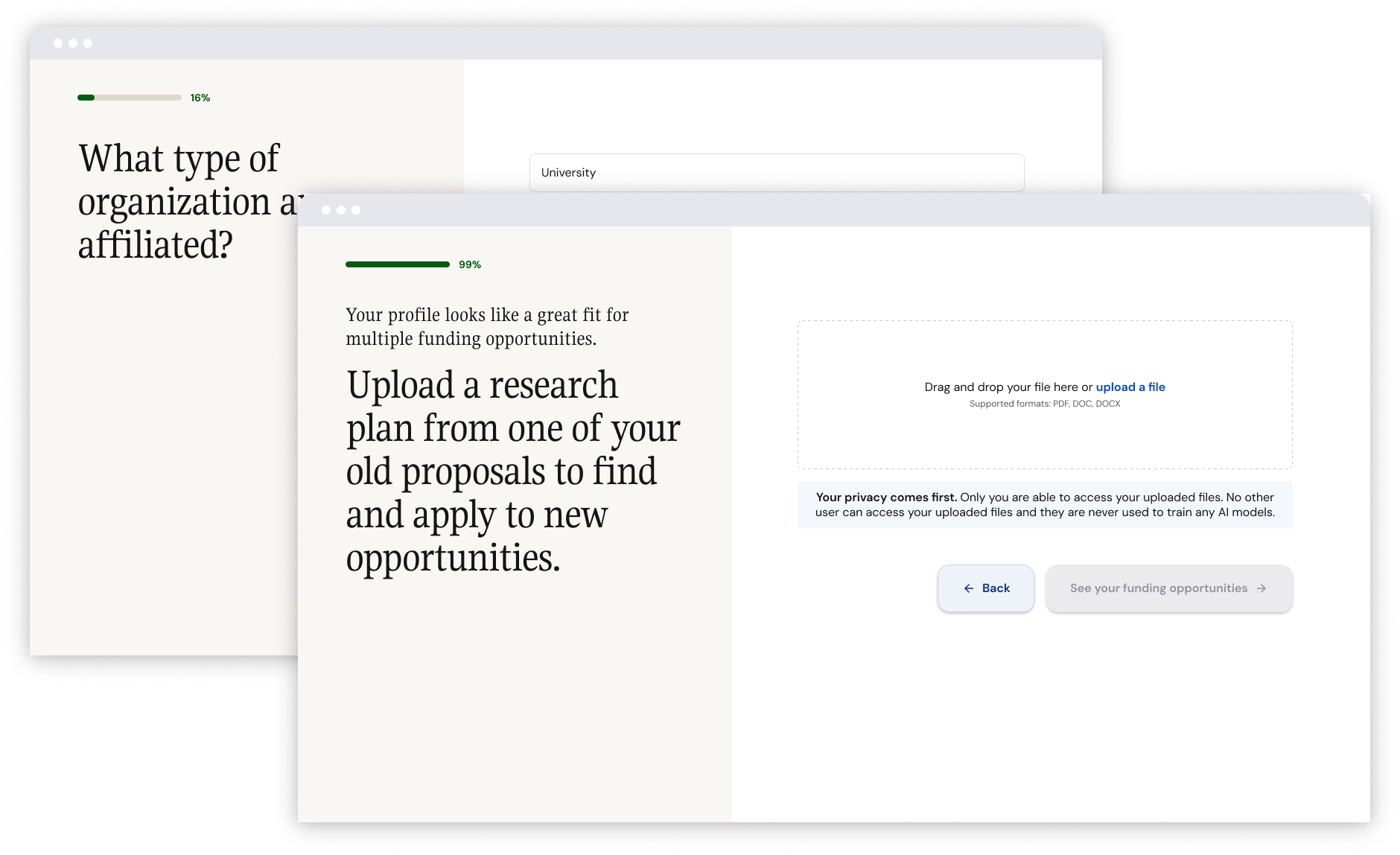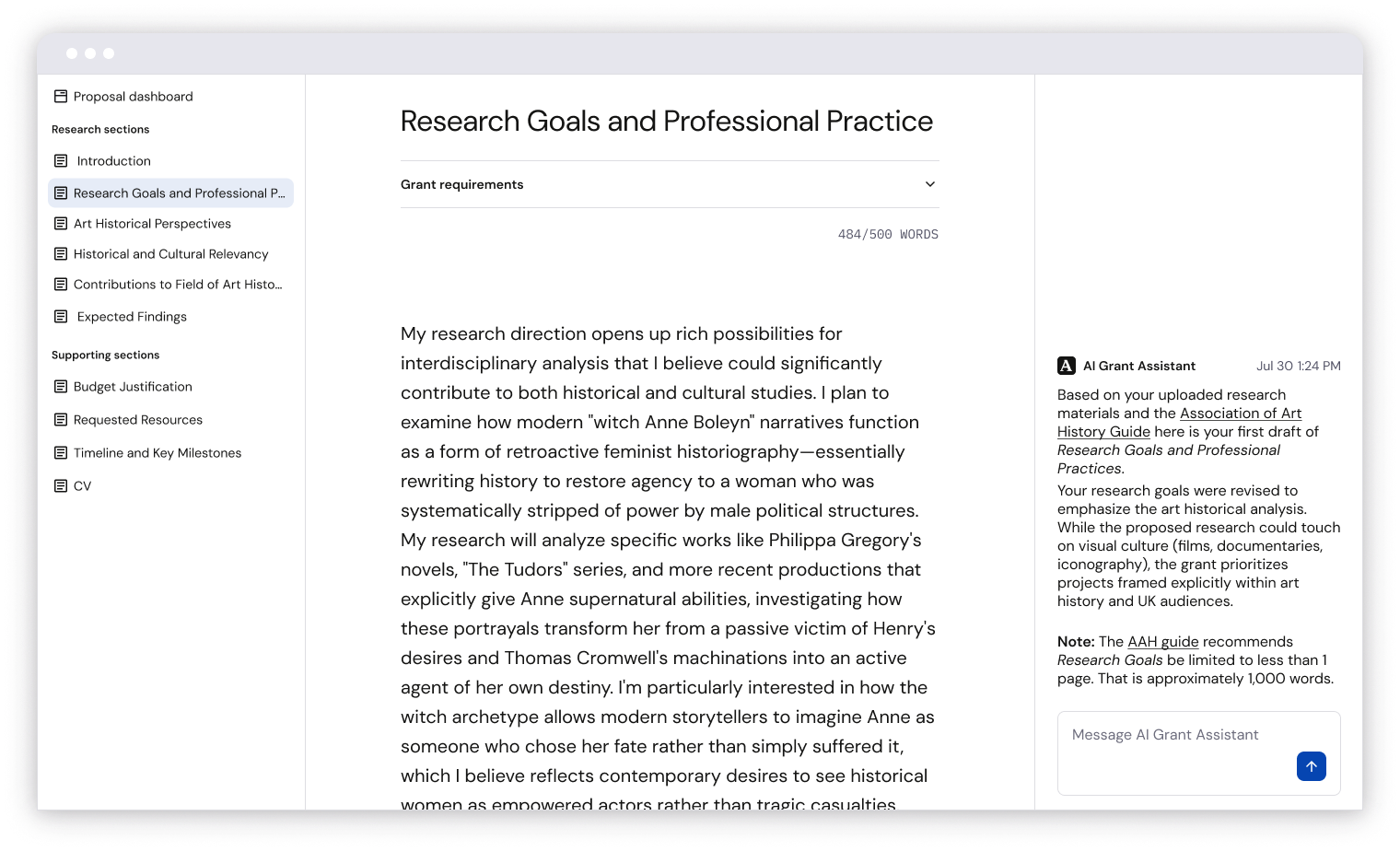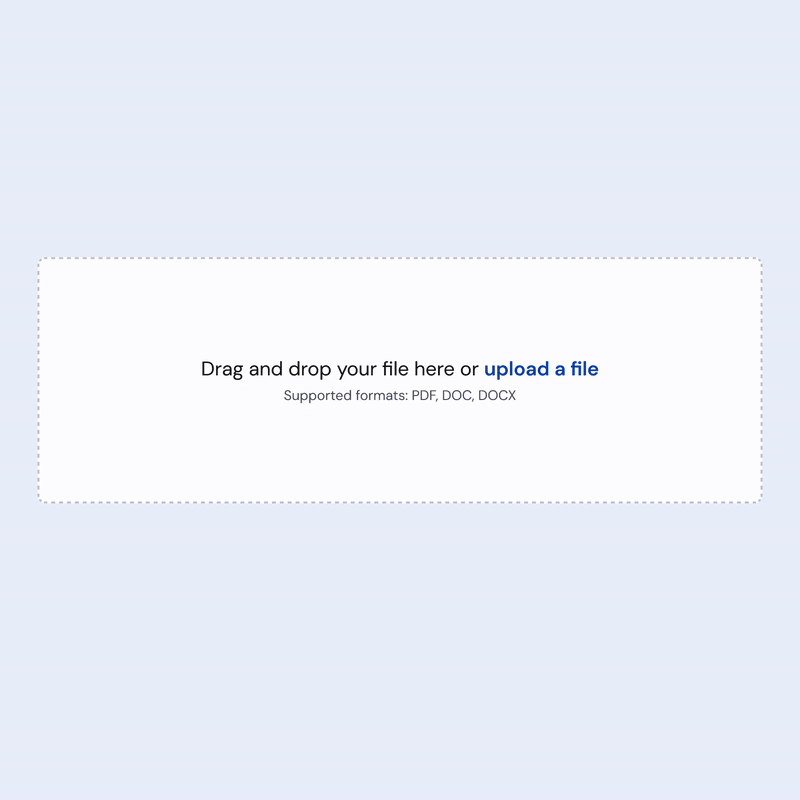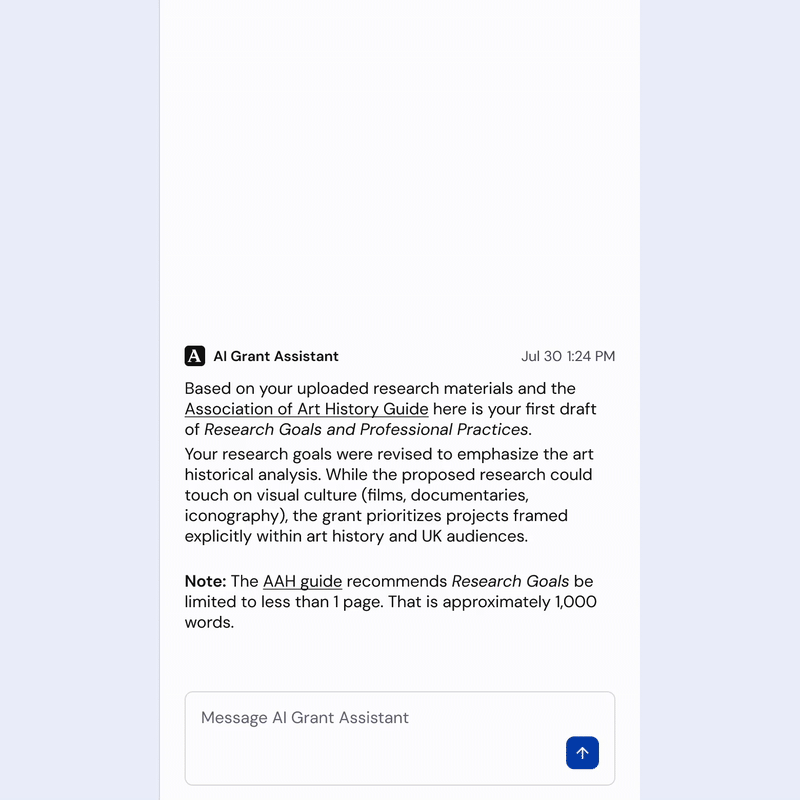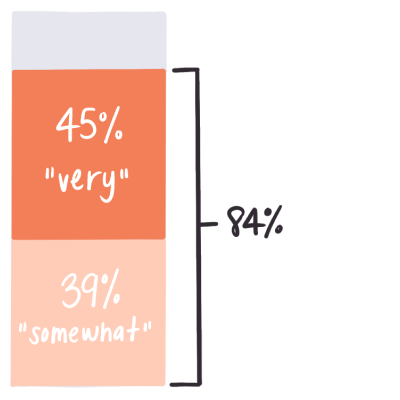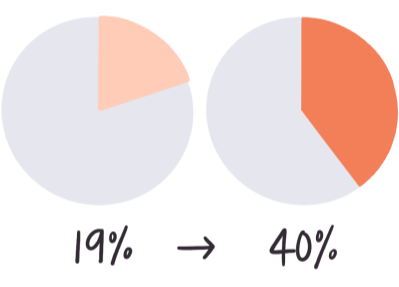Grants AI
An Academia case study
Grants AI matches researchers with the best grants and adapts their old proposals to new opportunities.
It is not uncommon for a researcher to spend 100+ hours preparing and writing a single grant proposal. After all that time, they are looking at only a 25%* chance of getting funded.
*based on the average acceptance rate for Federal grants
The problem with how Academics apply for grants today
Academics are often responsible for funding all or some portion of their research. The proposal writing process can require 100+ hours of writing and compiling details needed for a single proposal. Then, multiply that by 6*, which is a lower-end estimate for how many grants a researcher might need to submit within a year.
*Based on a 2023 GrantStation survey where 64% of respondents applied to 6 or grants for the previous year
Finding relevant grants
Funding can come from grants offered by Federal, non-profit, or private funders. Finding these grants requires searching a number of individual databases and piecing together other resources like listservs, professional organizations, and word of mouth. In the words of one of our users, “I am always actively looking.”
Writing grant proposals
Applying for a funding opportunity requires a customized proposal that fits unique content and formatting requirements. For each submission, a researcher must source requirements, write the proposal, and supply supplementary information. The proposal writing process is broadly consistent, but requires detailed knowledge at each step.
How our Grants AI tool works
Our solution is built as two separate tools.
Opportunity Finder helps discover relevant funding opportunities.
Proposal Writer focuses on crafting a perfectly customized proposal.
The experience starts with an onboarding question flow. Users are asked basic questions about their role, experience level, and research. Some of these questions are for our own edification, and some are used when we search for matches. Most importantly, the flow ends at an upload page where users provide a past research proposal. This proposal is the basis for the entire experience.
Initial onboarding
Proposal creation starts with an outline.
The tool has expertise about what is required by major funders and understands the requirements for each funding opportunity. Funders can have specific section requirements, word count limits, and formatting requirements.
Proposal Outline
The Grant Opportunity Finder uses a person’s uploaded grant proposal to search for matching grant opportunities. Matched opportunities are scored based on relevancy. Included for each result is a description, an explanation why the grant is relevant to their research, and a hint of what modifications would be needed to make their proposal ready for submission.
Grant Opportunity Finder
All funding proposals require some level of customization. Sometimes the necessary alterations can be small, like aligning the timeline and scope of work to the particulars of the award. Other funding opportunities dictate a specific methodology or outcome that requires a more substantive proposal rework. This is where the Proposal Writer’s value lies: it can help a researcher instantly understand the level of modifications expected and generate the corresponding content.
Proposal Writer
The beta Grant AI tool flow
AI is behind every stage of the tool. It powers the personalized search experience and streamlines the tedious aspects of the proposal writing process.
Users upload a previous research proposal and it is used as the basis for finding new funding opportunities.
We use a combination of vector and web search to find funding matches relevant to the research in the uploaded proposal.
Our system scores each match and surfaces reasoning and explanation for what would need to be modified for submission.
Based on the grant’s requirements, we generate an outline with all the sections required for submission.
The first draft can be generated for each section using the original proposal content as the foundation.
In writing mode, users can self-edit or request changes to the generated content using the AI Grant Assistant.
Project timeline & team
I joined the team after the initial proof of concept was green-lit following an AI hackathon. The team operated like a small start-up within the broader organization.
I joined the team.
I started with an overall audit of the tool experience and prioritized UX changes ahead of our beta release.
Beta period
Launched to our initial set of 50 beta uers with white-glove onboarding via live demos.
Opened up our beta to 20% of logged-in US users.
Added marketing landing page and self-serve onboarding flow.
Opened up beta even more to include ~75% of US users.
Launched NPS survey to quantify product market fit and began testing the monetization potential of Grant Opportunity Finder.
Improvements & monetization tests
Continued monetization testing of GOF while kicking off the usability testing of new product changes.
We had 326 US users during public beta.
70% of our current users discovered us organically through the link in Academia’s main site navigation.
Beta period
Finding product market fit
We used qualitative and quantitative research to assess product-market fit with the current version.
NPS survey
In a survey of our beta users 84% said they would be very disappointed or somewhat disappointed if the tool did not exist.
Opportunity finder
Our weekly Opportunity Finder emails that shares new grant matches sees strong engagement with a 14.2% CTR.
Proposal writer content
The generated proposal content was rated 4 or 5 stars by 93% of users, suggesting strong alignment with user expectations and needs.
Proposal writer engagement
We also saw the percentage of users generating 2+ sections rise from 19% to 40%.

